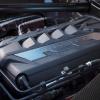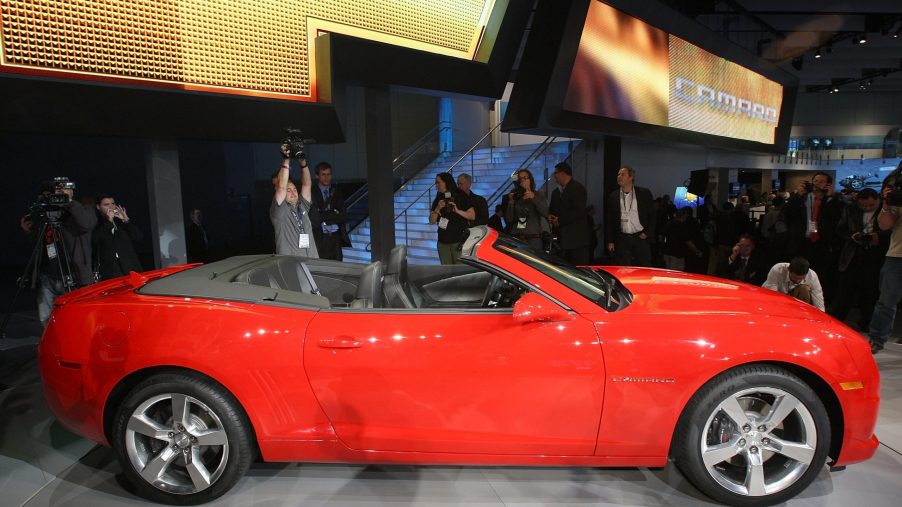
8 Most Common 5th-Gen Chevrolet Camaro Problems After 100,000 Miles
2010-2015 5th-gen Chevrolet Camaro problem guide highlights:
- The 5th-gen Chevrolet Camaro has several notable engine-related problems, but a few are specific to the 3.6-liter V6
- By now, all used 2010-2015 Chevrolet Camaros should have replacement airbag sensors, torque converters, as well as ignition switches, and keys
- Check Camaro Convertibles for worn soft tops and SS models for leaking oil coolers
It’s fallen behind on the muscle car sales chart, but the Chevrolet Camaro shouldn’t be overlooked. That includes used Camaros like the SS 1LE, as they’re often seriously sporty bargains. And while Chevy revived the iconic nameplate over a decade ago, the 5th-gen Camaro is still fairly modern and fast. However, as these sports cars pile on the miles, various problems invariably crop up. So, if you’re shopping for a 2010-2015 Camaro, here are some issues—beyond the usual used-car ones—you should look out for.
5th-gen Chevrolet Camaro Convertibles often suffer premature soft-top wear, but it’s addressable
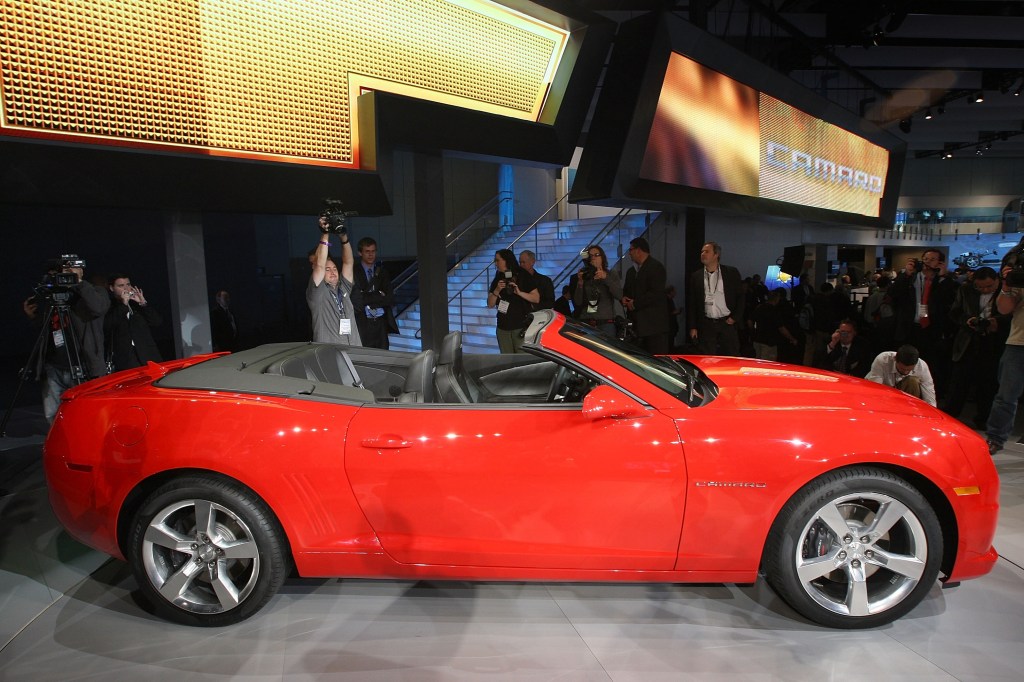
Although the Chevrolet Camaro makes for a solid convertible, it’s not immune to drop-top problems. And the 5th-gen models tend to suffer one problem in particular: premature soft-top wear, GM EFI says.
Admittedly, all soft-top convertibles eventually need new roofs. But fabric and vinyl tops often last longer than you might expect. For example, when I bought my old 1999 Miata, it still had its almost-20-year-old original top. According to GM EFI, though, many 5th-gen Camaro Convertibles require new tops sooner than that.
However, it appears that Chevrolet was aware of these issues even when the 5th-gen Camaro Convertible was new. Some cars were repaired as part of Chevy’s Customer Satisfaction Program. A few 2011-2012 models, for example, received modified support brackets and additional wind insulation under Support Bulletin #12052. So, if you’re looking at a 5th-gen Convertible, especially an earlier one, check if it had any work done.
The 2010-2015 Chevrolet Camaro 3.6-liter V6 had plenty of problems
For many Camaro buyers, it’s V8 or nothing. And to be fair, the 5th-gen Camaro has some great V8s, including the ZL1’s supercharged 6.2-liter LSA and the Z/28’s 7.0-liter LS7. Which, if you know your GM engine codes, is the C6 Corvette Z06’s engine. But there’s another reason to go with a V8-powered 5th-gen Chevrolet Camaro besides, well, horsepower: reliability.
On paper, the 2010-2015 Camaro’s 3.6-liter LLT V6 isn’t bad per se. Rated at 304 hp and 273 lb-ft of torque in 2010, Chevrolet bumped it up to 312 hp in 2011. And it got a second power bump in 2012 to 323 hp. Sure, the 6.2-liter V8 made up to 426 hp, but the V6 was cheaper, lighter, and more efficient.
However, while it burns less fuel than the V8, the V6-powered 5th-gen Camaro consumes significantly more oil, AutoGuide reports. Furthermore, the 3.6-liter V6 often suffers from premature timing chain wear, which is particularly problematic because it’s an interference engine. So, if the chain wears too much and/or breaks, you could bend the valves. And speaking of valves, the LLT V6 has direct fuel injection, so it often suffers from carbon buildup on its valves.
Now, carbon deposits are removable and a common direct-injection engine problem. Plus, it’s not unusual for high-mileage engines to consume a bit more oil. Still, it might be worth skipping over 5th-gen Camaros with V6s.
5th-gen Camaro automatic transmissions have some repairable problems to watch out for
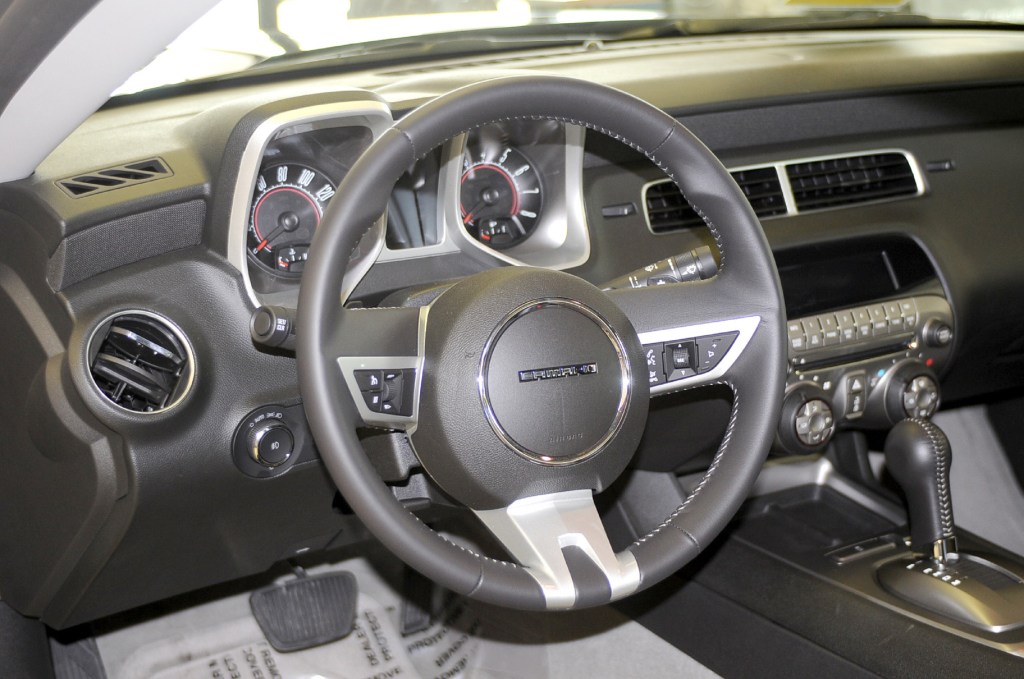
While V8-powered 5th-gen Chevrolet Camaros avoid the V6 problems, they can still suffer from other drivetrain issues. Specifically, issues with the 5th-gen car’s six-speed automatic transmission.
For one, high-mileage automatic 2010-2015 Camaros can develop faulty shifter interlocks, AutoGuide says. If this happens, you won’t be able to remove the key from the ignition even after you turned the car off. Secondly, some automatic 5th-gen Camaro owners experience shuddering at lower speeds, especially around 40-50 mph. In addition, a few owners sometimes found their cars unable to shift into any forward gears.
The good news is that these problems have solutions. We’ll cover the first shortly because it’s related to another 5th-gen Camaro problem. But Chevrolet addressed the shuddering by replacing the transmissions’ torque converters under a Technical Service Bulletin. And the final issue is usually repaired by replacing the transmission control module or the solenoid pack.
So, if you’re looking to buy an automatic 5th-gen Chevrolet Camaro, check its service history and make sure its transmission shifts smoothly.
The 2010-2015 Camaro’s ignition key issues should be fixed by now
That transmission interlock problem wasn’t the only ignition-related issue high-mileage 2010-2015 Chevrolet Camaros often face.
For one, many 5th-gen Camaro owners, including stick-shift ones, found themselves unable to remove their keys from their ignitions. Also, 2010-2014 Camaro owners with folding ignition keys instead of push-button starts often accidentally turned their engines off by bumping their keys with their knees. So, not only did they not have power, but their power steering and braking turned off, too. Plus, it meant their airbags might not deploy if they crashed.
Fortunately, Chevrolet recalled all 2010-2014 Camaros with those folding keys and replaced them with sturdier ones. In addition, the interlock and ‘hostage keys’ problems are usually solved by replacing the ignition switch. And by now, most affected cars should be fixed. But it’s issues like these that make pre-purchase inspections good ideas.
One 5th-gen Chevrolet Camaro airbag problem started a class-action lawsuit
The 5th-gen Camaro’s airbag problems extend beyond accidentally bumping the ignition key, though, especially for 2011-2012 ones. These Camaros were part of a class-action lawsuit involving their passenger-side airbag…sensors.
Normally, your car deactivates the front passenger-side airbags if no one’s sitting in that seat. And it does so through sensors built into the seat itself. But some 2011-2012 Chevrolet Camaro owners found their passenger-side airbags turned off even when someone was sitting up front. It turns out that the pads which hold the sensors in place were torn, preventing the sensors from functioning properly.
On the plus side, GM issued a TSB to rectify the matter. So, as with some of the other 5th-gen Camaro problems, this one is fixable. Just make sure the car you’re eyeing had its work done.
2010-2015 Camaros can have infotainment and electrical issues
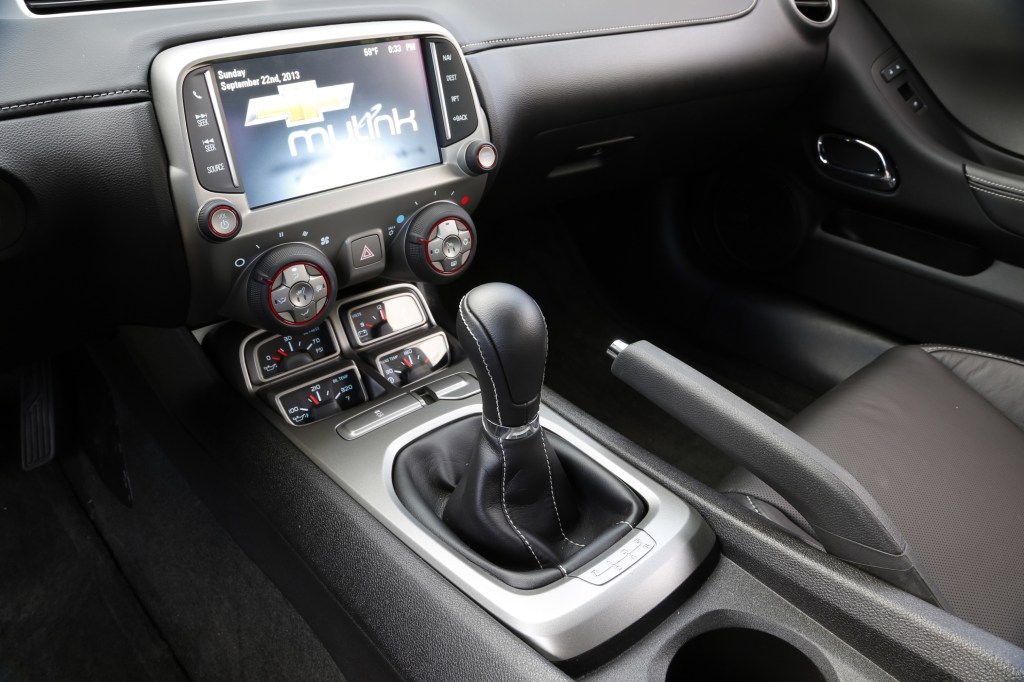
Midway through the 5th-gen Chevrolet Camaro’s production run, GM gave it some interior upgrades. Starting in 2013, the Camaro offered a 7” center touchscreen as well as optional navigation. However, while an infotainment system is a helpful feature, it’s also a potential source of problems.
As they age, 5th-gen Camaros sometimes develop infotainment bugs, including slow-to-respond touchscreens and outright crashes, AutoGuide reports. In addition, other owners have reported odd electrical glitches, including ones with the climate control, Autotrader.ca says. For example, some Camaros’ radios can randomly turn off, while others’ A/C systems won’t blow cold. And a few owners even reported complete airflow failure.
Unfortunately, some buggy infotainment systems can’t be fixed, only replaced. However, oftentimes these systems just need software updates, AutoGuide notes. And, silver lining, these updates can give your 5th-gen Camaro Android Auto and Apple CarPlay.
As for the climate control issues, some stem from going too long without replacing the cabin air filter, Autotrader.ca claims. But if that doesn’t fix the problem, you might need to replace the condenser or even parts of your air ducts. PPIs usually catch these sorts of issues, though.
Starter motor problems can plague high-mileage 5th-gen Chevrolet Camaros
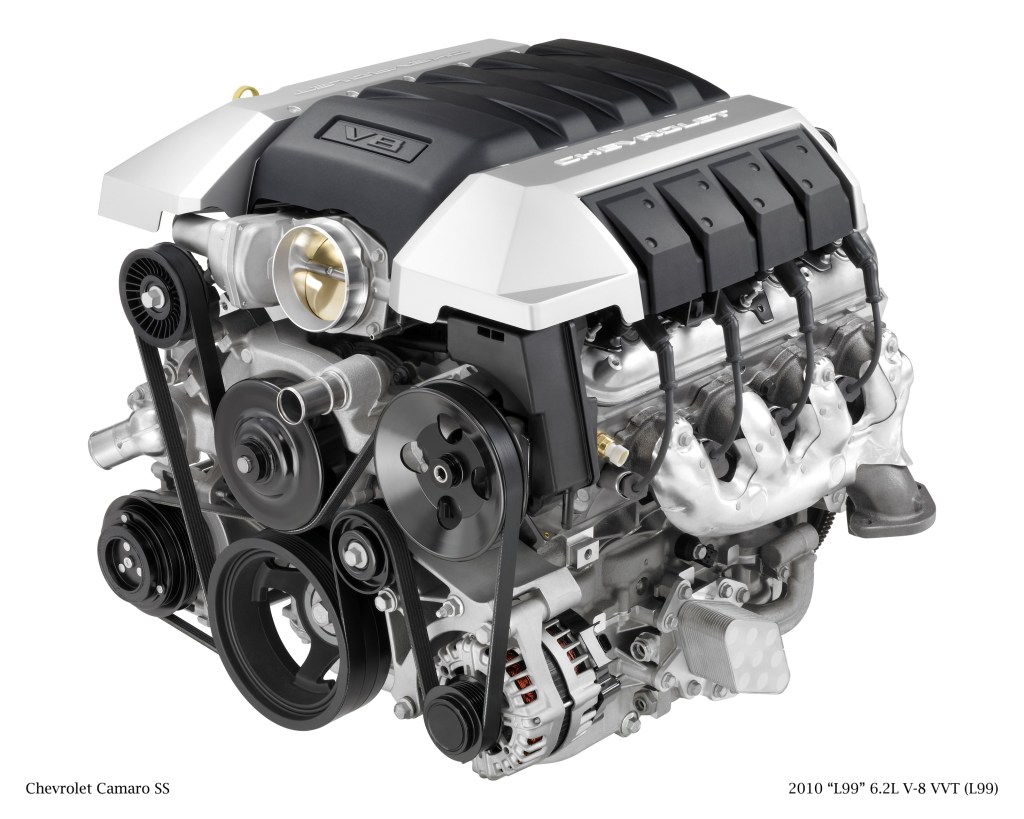
Besides a lack of cold air, a high-mileage 2010-2015 Chevrolet Camaro can suffer from excessive hot air. As in, its engine can put out so much heat that you can’t restart it after you turn it off. Often, this is due to an overheated starter motor, AutoGuide explains. But that’s not the 5th-gen Camaro’s only starter motor flaw.
Firstly, the positive battery cables on some cars, particularly 2010 Camaros, could touch the starter motor housing. Over time, this contact would wear away at the cable sheathing, eventually causing a short. Also, some Camaros’ starter motors had poor electrical ground connections. Without a solid ground, electricity won’t flow, and the motor won’t work.
Chevrolet addressed the battery cable issue with a recall, and by now, affected cars should be fine. As for the ground connection, replacing the stock one with an upgraded version or adding a second connection often does the trick, Autotrader.ca claims. Unfortunately, the 5th-gen Camaro starter motor is positioned close to the block, so heat buildup will always be an issue. Adding additional venting or upgrading to a performance starter could help, though.
Leaking 2010-2015 Camaro SS oil coolers are fixable
The 2010-2015 Chevrolet Camaro SS had more performance upgrades over the V6 model than just the V8 engine. It also got Brembo brakes, extra stability control modes, and in addition to more power, manual cars got launch control. Plus, much like the current Camaro, the 5th-gen SS had a factory oil cooler.
But while an oil cooler is usually helpful, the Camaro’s factory liquid-to-oil one often draws criticism for its less-than-stellar performance. Perhaps that’s why some cars’ starter motors overheat? Regardless, even those owners who don’t track their V8 Camaros sometimes notice different issues: namely, that their oil coolers are leaking.
Now, leaks from old gaskets are fairly common on high-mileage used cars. But in this case, 5th-gen Camaro SS owners can turn headaches into opportunities. Instead of just replacing the old gaskets, some owners replace the factory cooler with an aftermarket air-to-oil one. Besides fixing the leak, these coolers are reportedly more effective; that’s what I call a win-win.
One last note about 5th-gen Camaro SS oil issues: 2010-2011 models were dinged for excessive lifter tick, which often stemmed from oiling problems. Chevrolet addressed the noise with TSB #10-06-01-007C, which saw affected cars receive new lifters. Therefore, it’s a non-issue by now.
Follow more updates from MotorBiscuit on our Facebook page.
